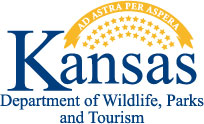Youth Pheasant and Quail Season in Kansas on Nov. 5-6
OutdoorHub 10.20.11
 Pratt, KS — Do you know a kid who has never been quail or pheasant hunting but might really like the opportunity? Whether it’s a niece or nephew, son or daughter, or just a young friend, the Kansas Department of Wildlife, Parks, and Tourism (KDWPT) asks you to make a date with a youngster for Nov. 5-6 — the Kansas youth pheasant and quail season. The season is a chance to honor the hunting tradition and “Pass It On” to youth, and many adult hunters also see this as time to stretch their legs, scout fields, and work dogs. But youth are the focus.
Pratt, KS — Do you know a kid who has never been quail or pheasant hunting but might really like the opportunity? Whether it’s a niece or nephew, son or daughter, or just a young friend, the Kansas Department of Wildlife, Parks, and Tourism (KDWPT) asks you to make a date with a youngster for Nov. 5-6 — the Kansas youth pheasant and quail season. The season is a chance to honor the hunting tradition and “Pass It On” to youth, and many adult hunters also see this as time to stretch their legs, scout fields, and work dogs. But youth are the focus.
During these two days, youth 16 and younger may hunt under the supervision of an adult 18 or older, but the adult may not hunt. It’s a great time to get kids out before the birds are stirred up, improving the opportunity of bagging game in uncrowded conditions. The daily bag limits during this season are two rooster pheasants and four quail (half the regular season limit).
For those who don’t have access to private land to hunt, KDWPT maintains wildlife areas and more than one million acres of Walk-In Hunting Access lands throughout the state. For more information on these areas, go the KDWPT website, www.kdwpt.ks.us, and click “Hunting/Where to Hunt in Kansas.” Explore public wildlife areas throughout the state and download the 2011 Kansas Hunting Atlas, also available in printed form at most license vendors. For information on where the best bird hunting may be found, click on “Hunting/Upland Birds” and go the Upland Bird Regional Forecast.
So there’s no excuse; take a kid pheasant and quail hunting Nov. 5 and 6, and enjoy yourself. If you’re an avid upland bird hunter, you may be back the following Saturday, Nov. 12, when resident and nonresident hunters hit the field for the opening of the regular pheasant and quail seasons, which run through Jan. 31, 2012. Prairie chicken season opens the following Saturday, Nov. 19. This season runs through Jan. 31, 2012, in the Northwest (north of I-70 and west of U.S. 281) and East (all Kansas east of U.S. 281) units. In the Southwest Unit (south of I-70 and west of U.S. 281), prairie chicken season runs Nov. 19 through Dec. 31.
The Kansas Department of Wildlife and Parks (KDWP) reminds all hunters to avoid standing crops during upland game bird seasons. Although most milo is expected to be harvested before the seasons open this year, some milo and other crops may not, and most farmers do not want these unharvested fields disturbed. Permission is required to hunt private land, whether it is posted or not.
During the regular seasons, the daily bag limit on pheasants is four roosters, and the daily bag on quail is eight birds of either sex. The daily bag limit on prairie chicken in the East and Northwest units is two, and the daily bag in the Southwest Unit is one. The possession limit on all three species is four times the daily bag limit.
A valid Kansas hunting license is required of all residents ages 16 through 64. Nonresidents must purchase a $72.50 nonresident hunting license, except that those nonresidents younger than 16 may purchase a youth nonresident license for $37.50. Anyone born on or after July 1, 1957, must have completed a certified hunter education course, except that youth 15 and younger may hunt under direct adult supervision without hunter education certification. Youth 12 through 15 may hunt without adult supervision (during the regular season only) if they have completed a certified hunter education course. Anyone 16 or older may purchase a one-time deferral of hunter education, called an “apprentice hunting license,” for the same price as a regular hunting license. This license is valid only through the calendar year in which it is purchased, and the holder must be under the direct supervision of a licensed adult 18 or older. A hunting license and hunter education are not required while hunting one’s own land.
For complete hunting regulation information, consult the 2011 Kansas Hunting and Furharvesting Regulations Summary, available wherever licenses are sold or online at the KDWP website under “Hunting/Hunting Regulations.”
“If you were fortunate enough to have been introduced to hunting at an early age, you know the magic,” says KDWPT Information Production Section chief Mike Miller. “It rests in your memories forever, and it drives a basic desire to experience the outdoors each fall. Hunting is a valued natural heritage, but it’s one that must be passed on from one generation to the next. Hunter numbers are decreasing, and younger generations are in danger of missing these treasured experiences. And fewer hunters reduces the financial, social, and political support needed for effective wildlife management. We hope everyone 18 or older who likes to hunt will take a youngster hunting this fall.”

